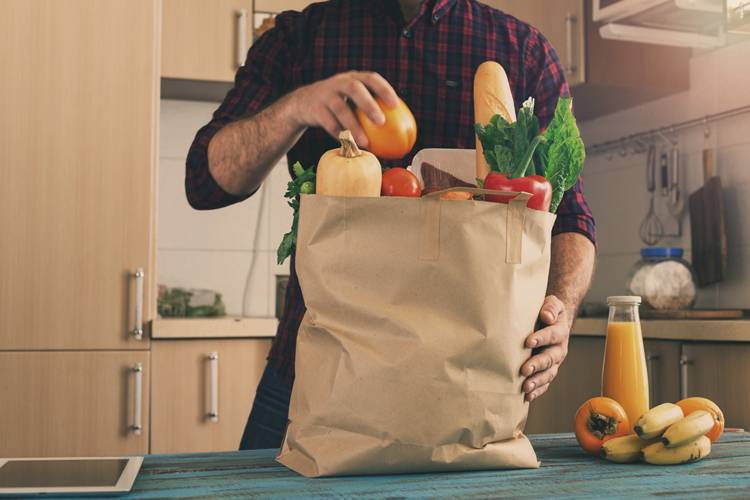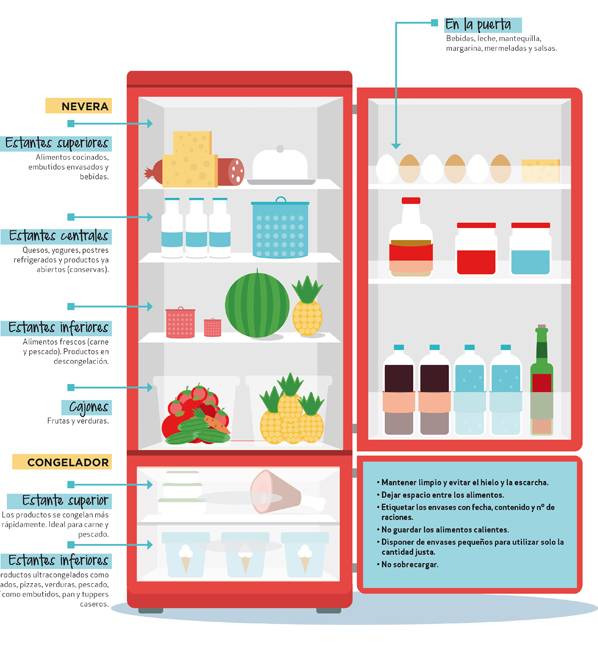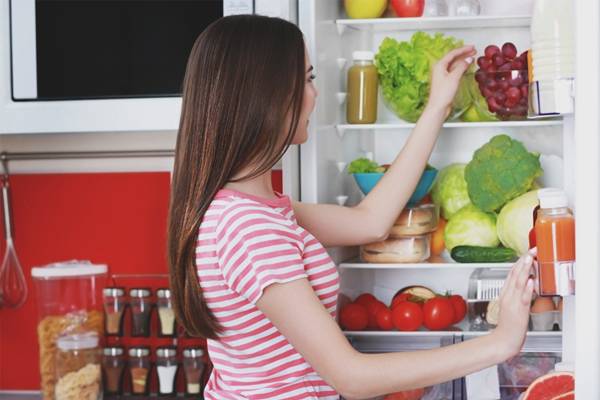How to organize the food in the kitchen
While 800 million people go hungry, every year a third of all food produced in the country is wasted. We give you the keys to preserve the food during more time, doing a good use of the icebox and of the packings for its conservation.
how to shop
Share

Spanish families throw away an average of 604 million kg of food each year, according to MAPAMA (Ministry of Agriculture, Fishing, Food and Environment) meaning every year a third of all food produced in the country is wasted, while 800 million people go hungry.
Throwing away food also means an unessecary use of land, water and energy, and contributes to the emission of greenhouse gases.
These are truly striking and worrying facts which must make us aware that we, as consumers, play a key role. In order to start to reduce wastage at home and become more aware, nothing is easier than adapting our shopping list to what we’re really going to consume, taking into account use-by dates and best-before dates and following the storage recommendations of the food in the fridge and in cupboards.

ORGANIZATION IN THE FRIDGE
Upper shelf: Products freeze faster. Ideal for meat and fish.
Lower shelves: well-frozen products such as ice-creams, pizzas, vegetables and fish as well as sausages, bread and tupperware with homemade food.
Upper shelves: cooked foods, packaged sausages and drinks.
Central shelves: cheeses, yoghurts, chilled desserts and opened products.
Lower shelves: Fresh produce (fish and meat) and defrosting products
Draws: fruit and vegetables
In the door: Drinks, milk, butter, margerine, jams and sauces
General cares:
- Keep clean and avoid ice and frost.
- Leave space between food.
- Label containers with date, content and number of portions.
- Do not store hot food.
- Use small containers in order to only store exactly the right amont.
- Don’t overfill.

CUPBOARDS
Store here all types of food that don’t need to be stored cold and can be stored for long periods.
It must be cool, dry and ordered. It’s important to be concientious and place products that will expire first to the front. Choosing the right container can also help keep products fresh for longer.
You can store legumes, salt, sugar, harina, pasta , rice, conserves, water and other bottled drinks or in cartons, potatos, garlic and onions, bread and bread dishes, cereals, oil, vinager, snakcs, nuts, hot chocolate, coffee etc.
TYPES OF CONTAINERS
- Tupperware and glass containers with lid: for storing foods in the cupboard and in the fridge.
- Fruit and Vegetable Packaging: for keeping products fresh for longer. Only open them when the food is going to be consumed.
- Vacuum packs: extracting air helps foods stay fresh for longer without changing their characteristics.
- Plastic bags: Useful for conserving foods, taking maximum advantage of your space.
- Clingfilm: Protects from humidity and smells
- Tinfoil: For stopping food from freezing.






